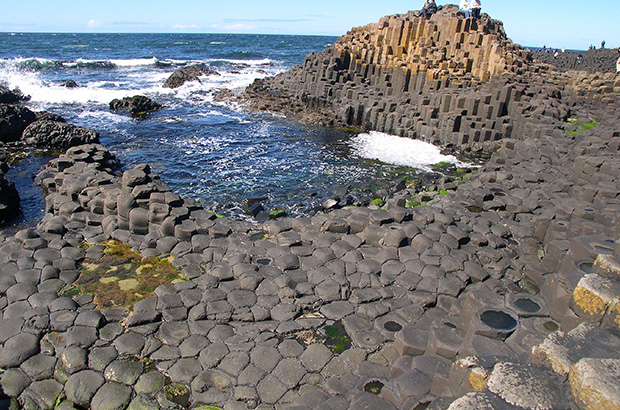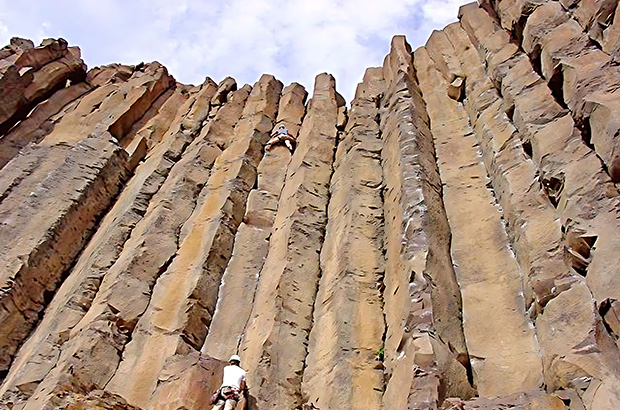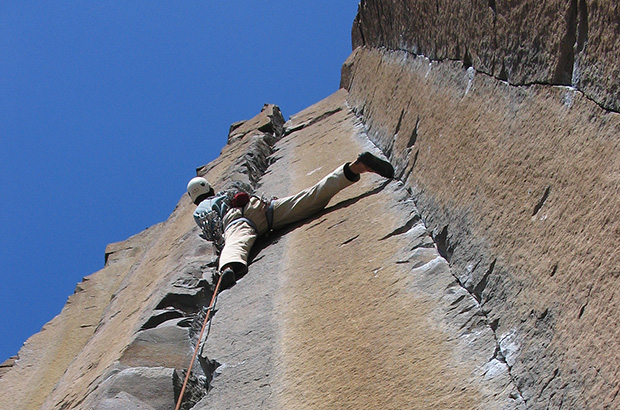About us
- Project Overview
- Concept
- Safe mountain climbing
- Safe rock climbing
- Gift sertificates
- Courses
- Feedback
-
Articles
-
Lirics, enigmas and misterios of mountain climbing
- Climbing psychology
- Kamchatka sea lions
- Ten best mountains of the world
- Machu Picchu Mystery
- Menorca - the mystery of the Talaiots
- Russian climbing reality
- The Camel
- Dyatlov group tragedy - version with no mystics
- Abandoned lighthouse
- Gaucho Argentina
- Horses and mountains
- Akershus Fortress
- Bergen, Norway
- Black Ufany forest
- The Pilot's ring
-
Stories about alpine climbing trips
- South Ushba via 3 buttress
- Ojos del Salado Arg side 2023
- Khan Tengri Edge of risk
- Dykh Tau and Bezengi 2023
- Mount Belukha - the Princess of Altai
- Climbing Alpamayo 2023
- Season 2023 completed
- Season 2023 specifics
- Climbing Monblan 2022
- Lifeless Sierra smiles
- Cerro Torre 50
- Siula Grande
- Climbing Kazbek. Georgia
- Ushba mountain beach
- North Ushba climb
- Morocco, Toubkal climbing
- The Life of the Valley of Sun
- Ushba. Forbidden Mountain
- Peak Lenin Climb
- Kilimanjaro climb
- Elbrus. Today, yesterday and tomorrow
- Mount Kenya climb
- Wind, Rocks and South Cross
- Kluchevskaya Sopka climb
- Peru climbing
- Touching the Legend
- Solo climb of Matterhorn
- Elbrus. Interview with rescuer
- Elbrus - the live legend
- Tian Shan, Peak Komsomol climb
- Khan Tnegri from the North
- International Ushba climb 2002
- Ushba 2002. Author Sergey Zabrodin
- Svanetia, Caucasus from the South
- Climbing Matterhorn - first article
- Climbing Belukha, Altay
-
Rockclimbing stories
- Menorca rockclimbing
- Tenerife rockclimbing
- Climbing in Mallorca January 2023
- Montserrat
- Majorca rockclimbing report 2014
- Rockclimbing in Peru - Huaraz 2023
- Mallorca rockclimbing December 2023
- Brazil rockclimbing
- Canary Islands and Tenerife
- Georgia Rockcimbing
- Madagascar rockclimbing
- Rockclimbing trip to Kalymnos, Autumn 2014
- Rockclimbing trip to Kalymnos, Spring 2014
- Rockclimbimg in Cuba
- Quadras or the architecture of the gods
- Rockcliming Armenia
- Cuba far away
- Crimea winter Rockclimbing
- Gear reviews, repairs, fails
- Iceclimbing trip stories
-
Lirics, enigmas and misterios of mountain climbing
- Codex of Mountain Guide
Quadras or the architecture of the gods
Read in Telegram in English
Leer en Telegram en Español
Rock climbing in Armenia with the MCS AlexClimb Club
MCS AlexClimb Rock Climbing Club and School
...Once, after a rock climbing training, we were sitting in a small shepherd's hut lost in the mountains, warming our hands by a small fireplace and enjoying incredibly delicious coffee from tiny porcelain cups.
Nowhere in the world do they make such delicious coffee as in the Armenian mountains
The conversation, as it often happens in the mountains, turned to the secrets of the past and the mysteries of bygone civilizations, the silent traces of which can be seen in many places in Armenia.
That was when I first heard the legend that in some of the neighboring gorges there are ruins of cyclopean structures erected in the immemorial time by the hands of giants.
Watching such sunsets, you will inevitably begin to believe in the most fantastic legends
In especially clear weather, - the shepherd said enthusiastically, when the sun, going down into the gap in the gorge in the west, illuminates from below the rocky ridges of the mountains, against the background of the darkening horizon, the collapsed battlements of the ancient fortress walls of colossal height flare up with a crimson fire...
The Armenian mountains keep countless mysteries of the past and existing civilizations
This story heard in the hut of the hospitable shepherd remained in my memory. And every time I came to Armenia to search for new locations and rock climbing routes, I tried to explore in more detail the gorges in the vicinity of Dzhermuk town, the location which the old man told me about.
But, one way or another, either because of bad weather or lack of time, it was impossible to find anything resembling to the fortress from the legend.

The "Danak" (Knife) rock climbing route is one of the first sport climbing routes we have fixed in Armenia
And so, accidentally finding myself in the Dzhermuk region at the end of November, during a period of particularly clear and warm weather (typical for late autumn in Armenia), I filled my old 4x4 with a full tank of fuel and decided to spend a few days searching for those very mysterious ruins of a prehistoric fortress.
What could be more exciting than searching for traces of an ancient legend?!
...The evening sun had almost went behind the horizon, when suddenly its last rays brightly illuminated for a few minutes the upper rock belt of the gorge, and the words of the legend came to my mind unexpectedly clearly.
At the top, about a hundred meters above the road, I could see the perfectly correct, standing in a row, tall vertical columns which shone in the rays of the setting sun. In some places they were collapsed, somewhere formed into grottoes and arches, and somewhere - as if they looked so perfectly shaped like just come out from under the chisel of a sculptor.
Columnar basalt in Armenia
The sight was incredible, especially captivating with the quick and elusive change of all the shades of the sunset.
The sun went out, the night quickly descended on the gorge, as it normally does in winter, it became gloomy and cold.
The next day, waking up early, I quickly had my breakfast and went to explore my find, which, as it turned out, had nothing in common with the giants of the past.
However, due to its unusual shape, it was of interest not only as a tourist attraction, but also as a rare and exotic object for rock climbing in its nature and structure.
The Devil's Tower basalt massif in the vicinities of Dzhermuk town in Armenia
While the morning frost had not yet melted, glistering as silver on the withered grass of the gorge slopes, I climbed to the foot of the vertically standing, regularly shaped basalt columns, striving up to the sky in orderly rows.
Impressive shapes of regular basalt columns
Indeed, when encountering such a relief for the first time and having a rich imagination, you can believe in its artificial origin. However, this phenomenon is known in the world as columnar basalt and it was formed exclusively due to tectonic processes.
First attempts to ascent the granite columns of the Devil's Tower in Dzhermuk region
Strange-looking rock massifs consisting of tightly pressed, regularly shaped pentagonal columns are found all over the world, especially in places of relatively recent volcanic activity.

Famous rock with a similar name - Devil's Tower in Wyoming, USA
The mechanics of the formation of such relief are based on the algorithms of cooling and cracking (crystallization) of basalt in the form of regular pentagons, which is dictated by the molecular features of this geological specie.
Basalt columns can vary greatly in color, surface character, size and density, but you will never be mistaken when passing by – the strangeness of the forms of columnar basalt catches your eye, makes you think about how diverse, amazing and incomprehensible is the world around us…

The Giant's Causeway in Ireland is paved with basalt tiles as if on purpose to make it easier to walk
Columnar basalt is a comparatively rare form of rock relief in Europe. However, where it is found, always live the legends about titans and giants - as it often reflected in geographical names. For example, the "Giant's Causeway" in Northern Ireland - since the middle of the 19th century, a natural "promenade" paved with regular pentagonal slabs has become a cult place for leisure and beautiful photo sessions.

The Giant's Causeway in Ireland on a postcard from 1901
In Armenia, this type of rock relief is quite popular among tourists - for example, not far from Yerevan, in Garni village, there is a landmark called "Organ Rocks" - a large and beautiful belt of basalt crystals, which the local people call "Quads".
The pagan temple in Garni village was built more than 2000 years ago on top of a large massif of basalt columns
Columnar basalt in many parts of the world is well known to climbers, although not everywhere local authorities allow such use of this relief. For safety reasons, overhanging basalt columns or grottoes are not suitable for rock climbing - after all, this relief is unpredictably fragile and dangerous.

Rock climbing on basalt columns in New Zealand
But where the columns are dense and not subject to strong erosion, you can often find the opportunity to climb interesting and very specific routes in both sport and traditional rock climbing.
The ubiquitous presence of good vertical cracks between the columns is suitable for climbing with mountaineering gear - in the trad rock climbing format.

Basalt Column Climbing in Oregon, USA
My first encounter with columnar basalt rock climbing was in the Castle Rock sector near Christchurch, New Zealand - a real paradise for rock climbers and mountaineers.
On the South Island of New Zealand, where its volcanic origin makes itself visible everywhere, and everyone from children to old are engaged in rock climbing, a large number of equipped rock climbing routes have been set on the bizarre basalt columns.

The Castle Rock area is one of the most popular outdoor rock climbing locations in New Zealand
In Russia, I have seen the similar relief in the Mount Elbrus region, in the Baksan Gorge - this landmark is called "Organ Pipes" - a beautiful columnar massif of absolutely smooth black basalt at the very foot of Mount Elbrus. "Organ Pipes" in Elbrus region are not suitable for any kind of rock climbing due to the large number of loose rocks and slippery, glass-like surface.
However, the columnar massifs of Dzhermuk region in Armenia are difficult to confuse or even compare with anything else, especially if you think from a climber's point of view.

Rock climbing on the columnar massif of the Devil's Tower in Armenia
"Quads" in Armenia are strong, practically non-breaking columns up to 40 meters high, from gray to dark brown in color, with good surface friction. You can comfortably climb these columns using the chimney climbing technique between the edges of the columns, spaced from each other at a distance of up to 1 meter.
Between the columns there are long vertical cracks from 1 to 5 centimeters wide - an ideal option for using removable protection - all kinds of nuts, friends, etc.
Climbing belay on columnar basalt using nuts
As part of the program for developing the region's tourism infrastructure, in 2012, together with my partners in Armenia, we bolted more than 20 sport climbing routes on the compact basalt massif "Wings of Tatev", not far from the famous Tatev Monastery in the southeastern part of Armenia.
The Wings of Tatev columnar basalt massif in the Syunik region of Armenia
One interesting fact - the name "Wings of Tatev" was given to these rocks immediately after their first discovery - the massif really resembled the outstretched wings of a giant bird. And much later, I found out that the very name of the ancient monastery of the 9th century - Tatev, is translated from Armenian as "Giving wings". It turned out to be symbolic.
Author of the text and (almost all) photos - Alex Trubachev
Your guide to the rock climbing and mountaineering routes of the Caucasus
MCS EDIT 2024
Our Principles
AlexClimb Rule #1 - Safety First
From the very beginning of our activity, here nearly 16 years, the first Principle of work of School of mountaineering and rock-climbing of MCS AlexClimb is the Safety Priority. On the basis of this Principle all process of training is based, all programs and rounds are developed and carried out only within this main principle. We consider that at professional approach to development of programs, at personal discipline and correctly put motivation - occupations by mountaineering and rock-climbing are COMPLETELY safe. And from the return - all troubles and accidents in our sport come from nonprofessionalism, from ignorance or neglect by elementary standards of safety, from irrational motivation, from revaluation of own forces and opportunities. All these prerequisites we COMPLETELY EXCLUDE in our work - ours Rock-climbing, Ice climbing and Mountaineering are based on one Principle - the Safety Priority. In rock-climbing, mountaineering and ice climbing, the Priority of Safety of MCS AlexClimb-is your personal security and comfort irrespective of, than we are engaged - we train muscles and we work technology of the movement in the sports hall and on the rock climbing wall, we make the way through snowstorm to top or we relax on golden sand of the Caribbean beach after hot day of trainings on rocks. The Safety priority - the main credo of School of mountaineering and rock-climbing of MCS AlexClimb.
AlexClimb Rule #2 - Leave No Trace
Closely interacting with Nature, working with the active programs in mountains, woods, lakes and rivers, we perfectly understand the importance of carefull and respectfull bahavior towards the Nature, for its resources. From the very beginning of our outdoor-activity we adopted rules of Leave No Trace technique - the standard of behavior of the person accepted in all the civilized world in relation to environment and especially - to the wild nature. After all on the relation of people to the nature near which they exist, itself can draw dalekoidushchy conclusions on the relation of these people to... Where and as we didn't travel - we don't reserve any garbage, we try to reduce whenever possible our influence on environment to a minimum. We clear earlier zagryazyonny tourist parking of the left garbage, we take out and we take out to utilization places that to us other people left there. We consider that only thus, at personal individual consciousness of each citizen, each tourist, climber or autotraveller, we will be able to keep the nature surrounding us in its state, natural, suitable for life, - in it pledge of the healthy future for ourselves and our children.





